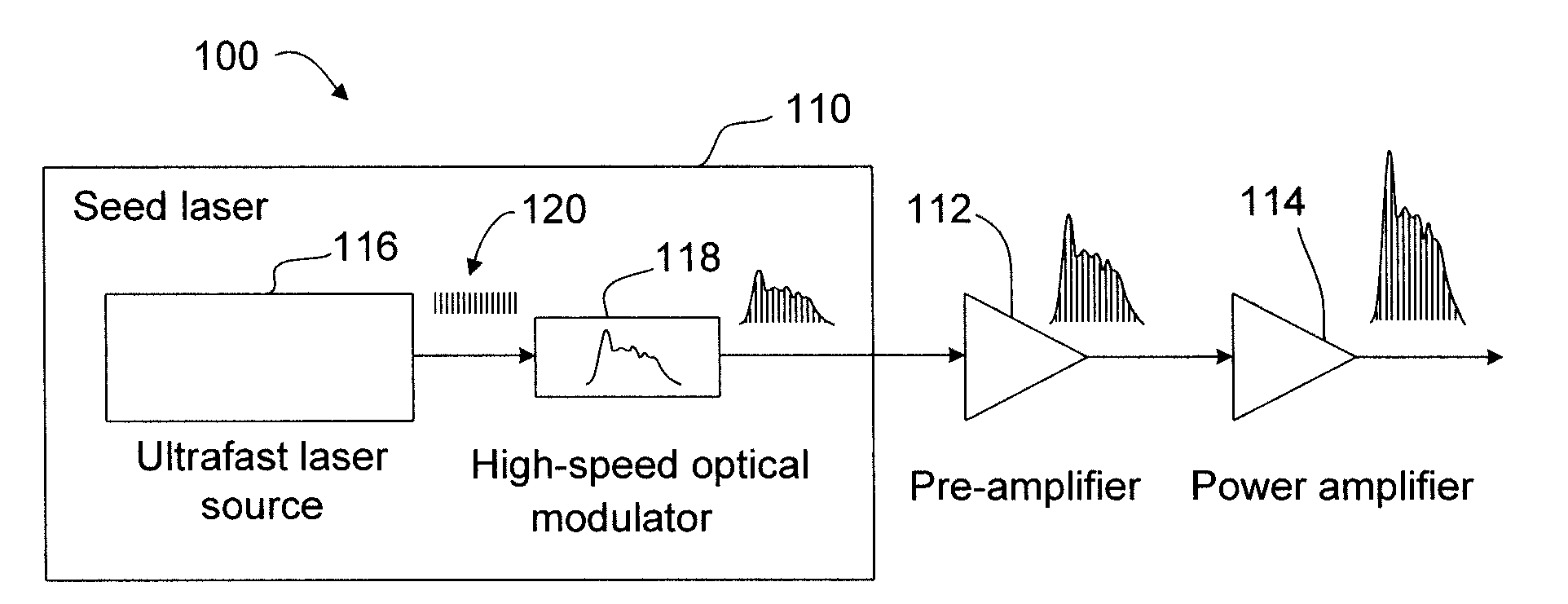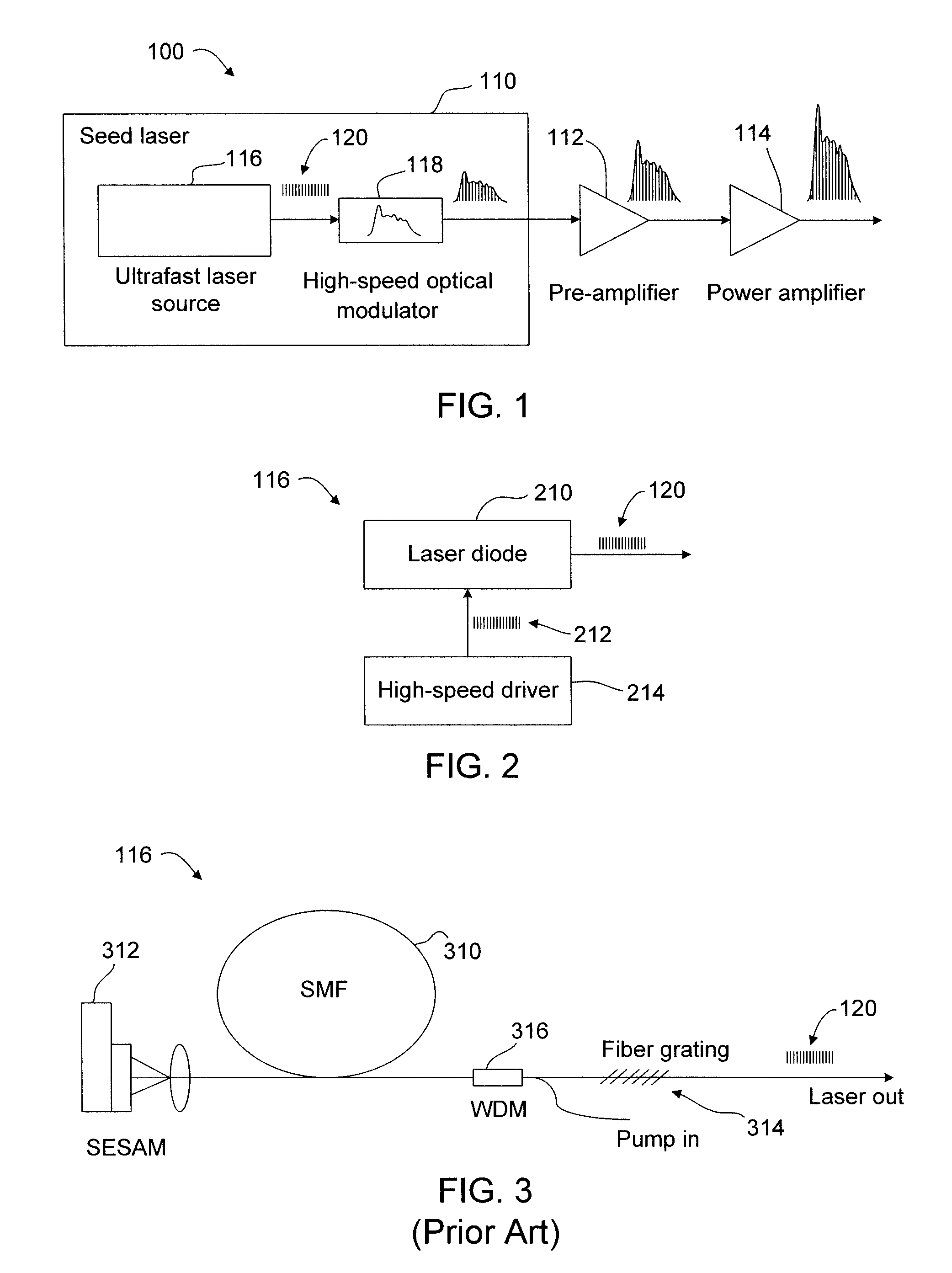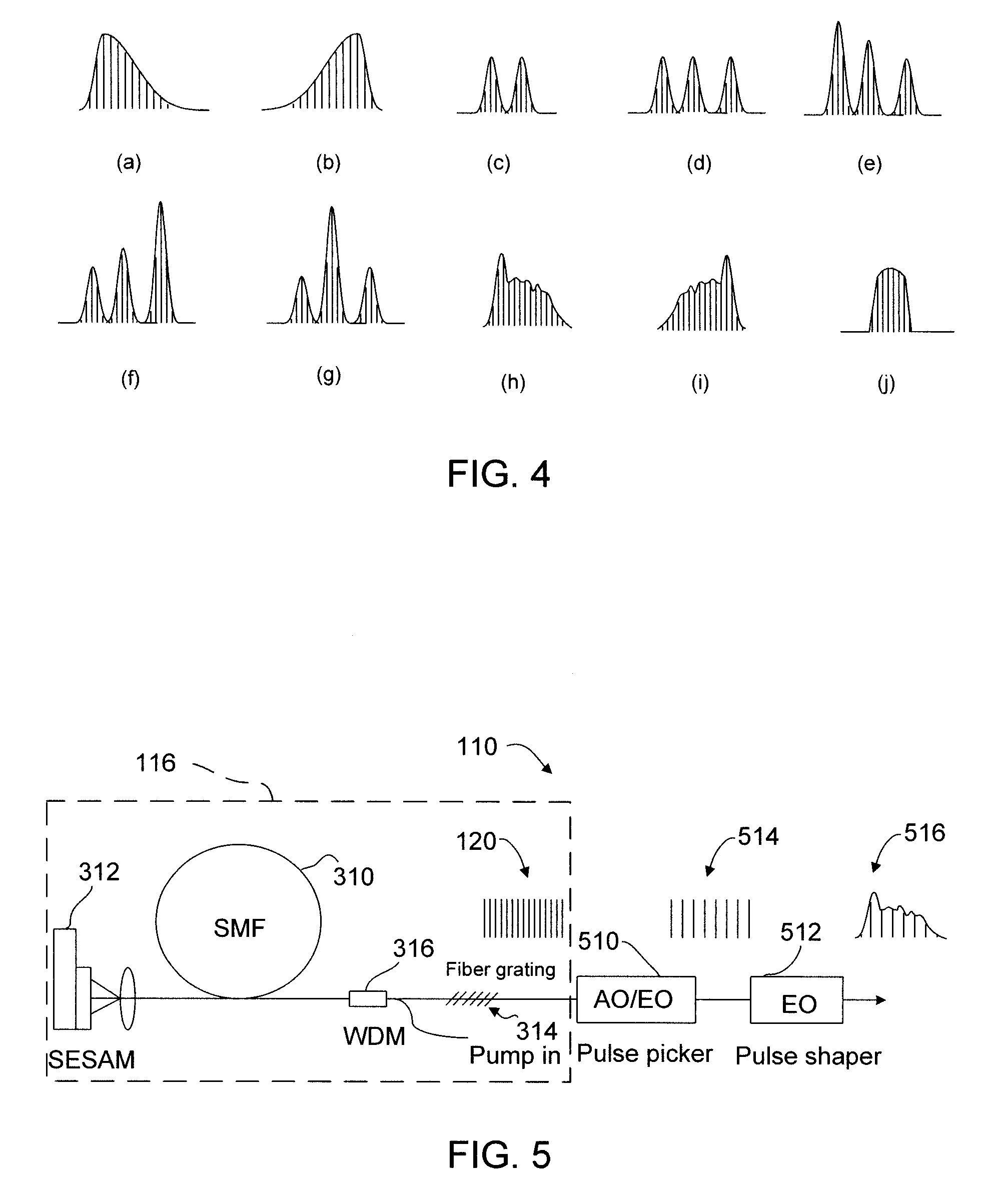Pulse temporal programmable ultrafast burst mode laser for micromachining
a laser and pulse-time technology, applied in the field of laser micromachining, can solve the problems of “over crater”, reduce the reliability of ic chips, and non-optimal thickness
- Summary
- Abstract
- Description
- Claims
- Application Information
AI Technical Summary
Benefits of technology
Problems solved by technology
Method used
Image
Examples
Embodiment Construction
[0023]A laser processing system according to one embodiment generates ultrafast laser pulses with a temporal programmable burst mode. A burst pulse laser includes a high repetition rate ultrafast laser configured to deliver a pulse train with each pulse in the train having an independently controlled amplitude. The respective amplitudes of each ultrafast pulse in a group or “burst” of pulses, along with the spacing between pulses, define a “burst envelope.” In addition to independently controlling the amplitude of each ultrafast pulse in a burst of pulses, the system may also provide selective control of spacing between each ultrafast pulse and / or the overall temporal width of the burst envelope. Thus, the system provides selective shaping of the burst envelope for particular laser processing applications. Because each ultrafast pulse within the group of pulses may have a temporal width in a picosecond range, or even a femtosecond range, the laser system may be used, for example, fo...
PUM
| Property | Measurement | Unit |
|---|---|---|
| rise time | aaaaa | aaaaa |
| rise time | aaaaa | aaaaa |
| wavelengths | aaaaa | aaaaa |
Abstract
Description
Claims
Application Information
 Login to View More
Login to View More - R&D
- Intellectual Property
- Life Sciences
- Materials
- Tech Scout
- Unparalleled Data Quality
- Higher Quality Content
- 60% Fewer Hallucinations
Browse by: Latest US Patents, China's latest patents, Technical Efficacy Thesaurus, Application Domain, Technology Topic, Popular Technical Reports.
© 2025 PatSnap. All rights reserved.Legal|Privacy policy|Modern Slavery Act Transparency Statement|Sitemap|About US| Contact US: help@patsnap.com



